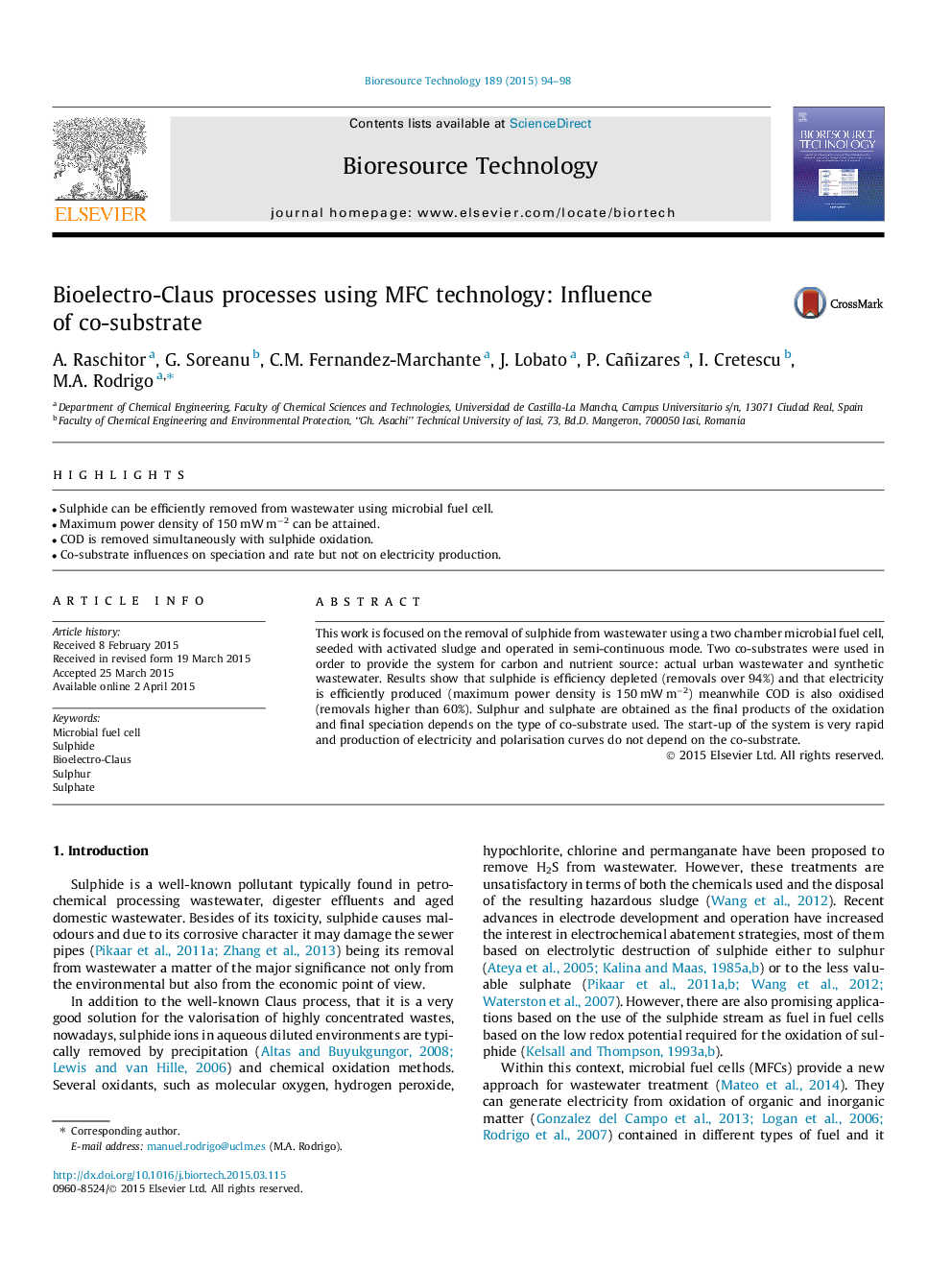| کد مقاله | کد نشریه | سال انتشار | مقاله انگلیسی | نسخه تمام متن |
|---|---|---|---|---|
| 679761 | 1459954 | 2015 | 5 صفحه PDF | دانلود رایگان |

• Sulphide can be efficiently removed from wastewater using microbial fuel cell.
• Maximum power density of 150 mW m−2 can be attained.
• COD is removed simultaneously with sulphide oxidation.
• Co-substrate influences on speciation and rate but not on electricity production.
This work is focused on the removal of sulphide from wastewater using a two chamber microbial fuel cell, seeded with activated sludge and operated in semi-continuous mode. Two co-substrates were used in order to provide the system for carbon and nutrient source: actual urban wastewater and synthetic wastewater. Results show that sulphide is efficiency depleted (removals over 94%) and that electricity is efficiently produced (maximum power density is 150 mW m−2) meanwhile COD is also oxidised (removals higher than 60%). Sulphur and sulphate are obtained as the final products of the oxidation and final speciation depends on the type of co-substrate used. The start-up of the system is very rapid and production of electricity and polarisation curves do not depend on the co-substrate.
Journal: Bioresource Technology - Volume 189, August 2015, Pages 94–98